Posted by
Shay Harel
The September SERP was action-packed to say the least. Just when all seemed quiet, Google rolled-out several algorithm updates added a SERP feature, and took another one out of the mix. Last month’s SERP was anything but typical, both quantitatively as well as qualitatively. I personally can’t remember a month on the SERP that was as non-stop and as “big time” as last month was.
Early SERP Fluctuations – Local and Undisclosed Algorithm Updates
Like many months, our Rank Risk Index recorded a series of rank fluctuations in September. One of the unique things about last month though was just how impactful these fluctuations were. These fluctuations were dynamic, multi-layered events that shook up the SERP in a variety of ways. Let’s begin with the fluctuation event that took place just as we flipped our calendars to the new month.
Early Month Fluctuations and an Undisclosed Update
September rolled in with a SERP fluctuation fury. While quiet on the first of the month, the Rank Risk Index spiked to unprecedented heights on the 2nd and continued to be “***” on the 3rd as well. There was a significant amount of SEO industry chatter that indicated that the SERP fluctuations indeed represented deep ranking shifts. Though Google neither confirmed nor denied that an update had taken place, industry experts, as well as the SEO community as a whole, generally concurred that the fluctuations represented a significant change in Google’s core search algorithm.
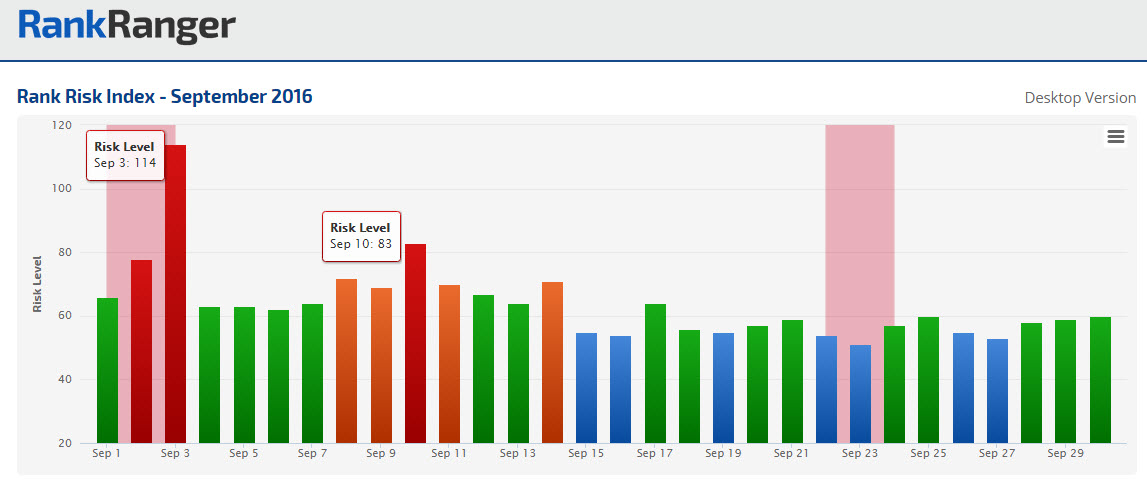
Fig 1. The Rank Risk Index shows an early month fluctuation spike along with a prolonged mid-month increase in SERP fluctuations
Possum- Local Ranking Update
As chatter around the early month SERP fluctuations continued, an interesting trend emerged. A significant amount of the algorithm update chatter related to local rankings. Even though Google again neither confirmed nor denied a local ranking update, the industry concluded that indeed a local algorithm update did occur and named the unofficial roll-out, Possum. According to the industry, Possum is aimed at updating (at least partially) how businesses rank within Local Packs and Google Maps.
The data from our SERP Feature Tool corroborates that there was an update made to the Local Pack feature. In conjunction with Possum’s roll-out, and as shown on an Insight Graph, we saw the Local Pack fall just over 2.5 percentage points and take on a new data trend. Interestingly, the SERP feature picked up its lost ground by the end of the month.
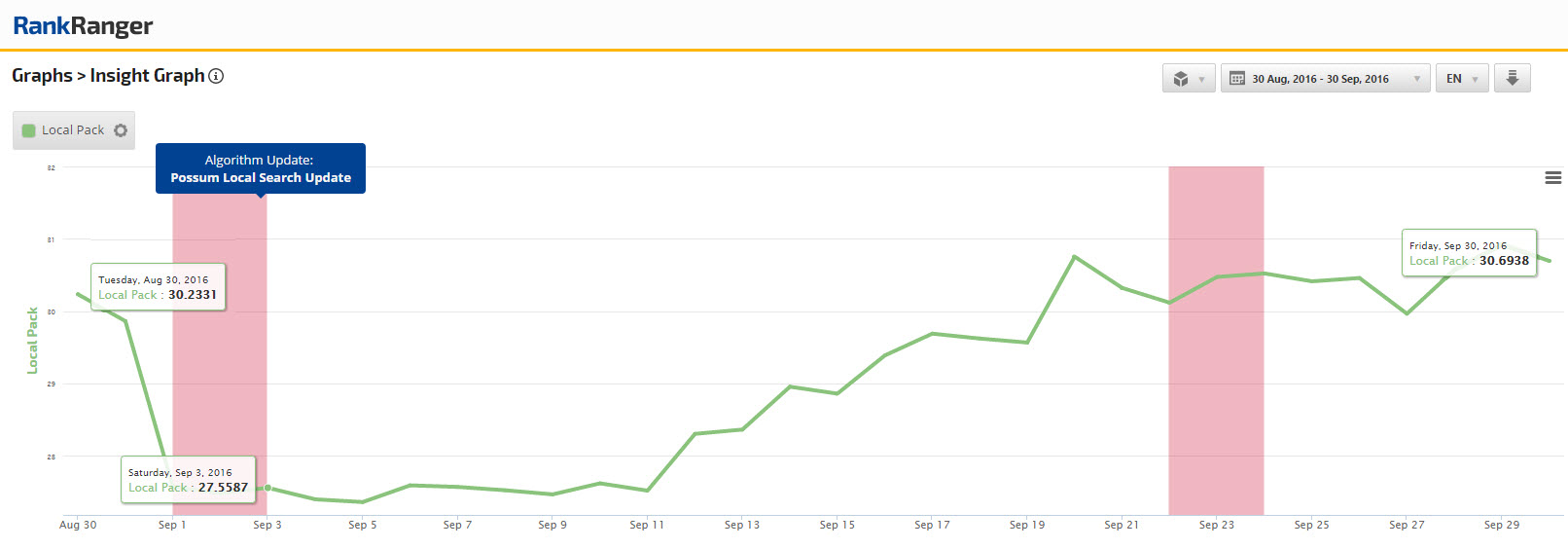
Fig 2. Local Pack on desktop (US) shows an early September drop off in conjunction with Google’s local algorithm rollout
Mid-Month SERP Fluctuations – The Image Box Algorithm Update
The month’s other major SERP fluctuation event took place between September 8th through the 14th (see Figure 1). Though not reaching the fluctuation levels recorded earlier in the month, the Rank Risk Index showed elevated fluctuation levels for five out of seven days within the aforementioned time period. The industry was again filled with chatter related to changes in rank and an algorithm update. In response to the industry discussions, Google downplayed the event saying that “fluctuations in search are normal…“
@akrampathan21 @rustybrick @methode fluctuations in search are normal and a sign that our #algorithms & #engineers are working hard.
— John Mueller (@JohnMu) September 16, 2016
Image Box Falls Off the Page One SERP
Quite the coincidence, between September 7th and 8th the SERP Features tool showed the Image Box take an over 5.5% loss. Then, only a few days later (between September 13th and 14th) the SERP feature fell from showing on 23.2% of Page One SERPs to just 11.9% – a drop of more than 50%. Seeing the feature drop over 50% days after the previous dip, indicated that the SERP fluctuations shown on the 14th and those from the 8th – 11th (Figure 1) were related.
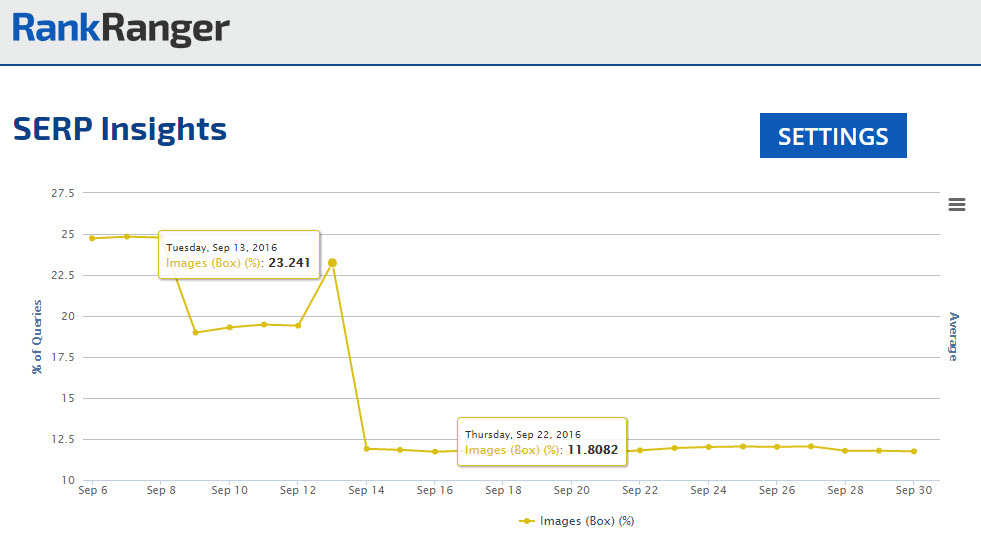
Fig 3. Image Box on desktop (US) shows an over 50% drop off between September 13th and 14th
After some extensive research, we found that a large majority of Image Boxes that had previously appeared on Page One were moved to Page Two.
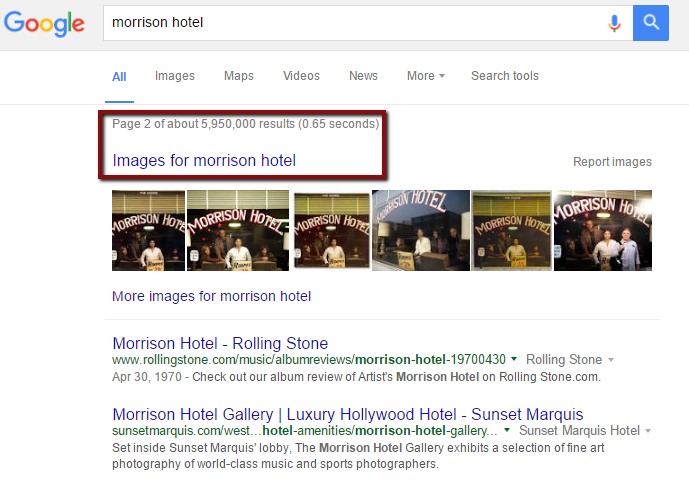
Fig 4. An Image Box that previously appeared on Page One, now displays on the second page of results
The Image Box Algorithm Update
As the Image Box “fell off a cliff,” we found an amazing correlation… as the Image Box dipped, the average number of Page One organic results rose. You might think that this makes a great deal of sense. After all, if the Image Boxes, at least a large chunk of them, were taken off of Page One, something had to replace them on the SERP. It would seem then that Google just took the top two results from Page Two and shifted them to Page One in place of the images.
Fig 5. The average number of organic results on Page One displays an inverse pattern to that of Page One Image Boxes
This would be sound thinking had there not been a prolonged series of elevated SERP fluctuations which indicated that rank itself was also impacted. Following up on these rank fluctuations, our team uncovered that in fact Google rolled out a mid-month algorithm update that had a major impact on Page One rankings. When all was said and done, 36% of current Page One results were new – they had not been there prior to the update (for those keywords that previously triggered a Page One Image Box).
AMP is now within the Organic Results
I previously reported that Google had announced that AMP pages would appear within the organic results. On September 20th, the Mobile SERP Features Tracker did indeed start picking up AMP within the organic results. Though the initial AMP data we tracked only showed that about 2.7% of Page One results included at least one AMP result, by month’s end that number grew dramatically to 6.4%, nearly tripling itself.
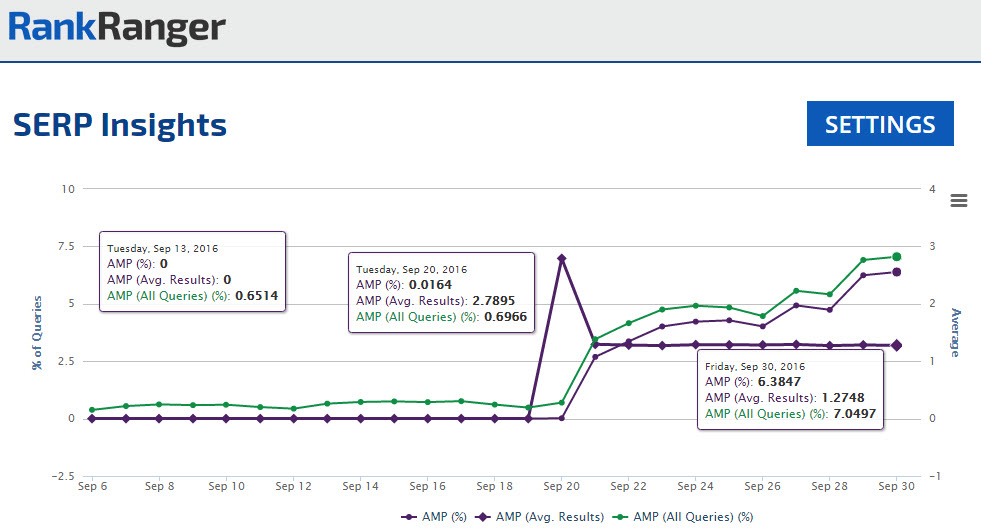
Fig 6. The percentage of SERPs showing organic AMP results trends upwards while the average number of organic AMP results per page remains mostly consistent
The insertion of AMP within the organic results seems to coincide with Google removing the Mobile-friendly label. I would speculate that Google removed the label to pave the way for AMP. I don’t see any conceivable way Google could have left the Mobile-friendly label and inserted the AMP icon at the same time. If they did, the mobile SERP’s organic results would have looked cluttered and overstuffed.
A Variety of SERP Features Changes in September
Though the big news had to do with rank fluctuations, algorithm updates, and the highly-discussed AMP pages, there were a series of smaller SERP feature changes that occurred in September. While these changes were not as grandiose as massive rank fluctuations or organic AMP results, they are both interesting and significant in their own way.
Third Party Reviews in Local Knowledge Panels
Back in August, Google added critic reviews and best-of lists to some of its Local Knowledge Panels. Notably absent were reviews from third party sites. While perusing through the comments on the various articles that reported on Google’s additions, the lack of third party reviews was a constant theme. Google was obviously aware of the need for such reviews because on September 7th they announced that third party reviews would be featured in Local Knowledge Panels.
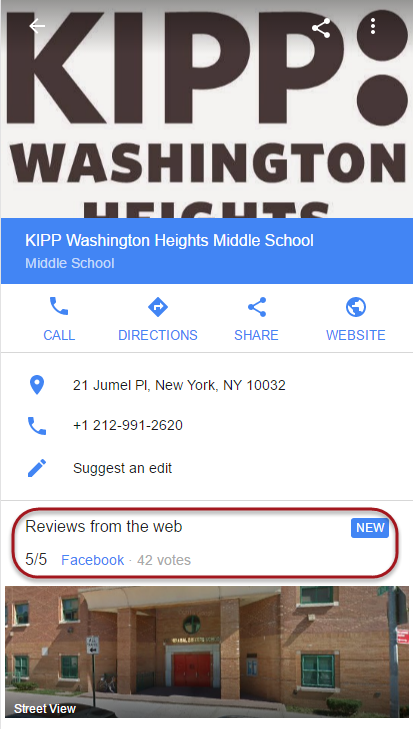
Fig 7. A mobile Local Knowledge Panel for a neighborhood school includes third party reviews from Facebook
Google Asks If Reviews Were Helpful
On September 12th it was reported that in an effort to see just how helpful reviews are, Google has been inserting a gray colored “thumbs up” icon together with the word “Helpful?” under various reviews. The obvious goal is to give people the option to give feedback on the reviews being posted. I’ve actually seen this feature come up quite often over the course of the month.
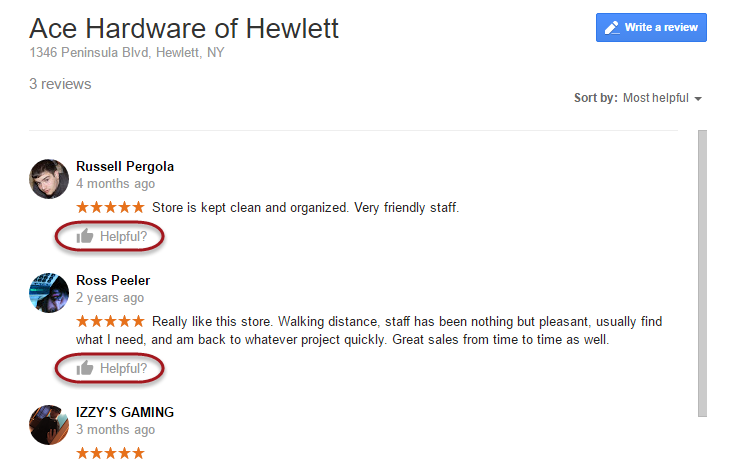
Fig 8. Two out of the three Google reviews (anchored to a Local Knowledge Panel) displayed with the “Helpful?” button
Image Thumbnails Spike on Mobile
Last but not least, Google has gone Image Thumbnail crazy on mobile. While that might be an exaggeration, on September 15th Google said that it wanted the mobile SERP to be more “visual.” It did so by increasing the number of results that displayed together with an Image Thumbnail. The shift was in fact striking as on September 13th the feature showed on just .29% of Page One SERPs. A day later Image Thumbnails were showing on 10.7% of Page One results.
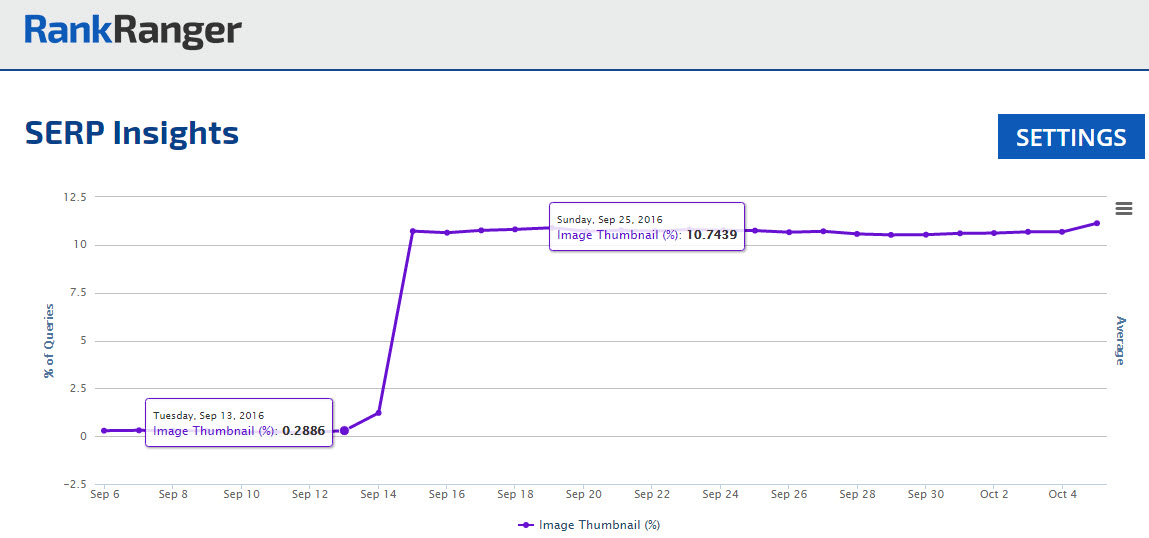
Fig 9. Mobile Image thumbnails undergo a mid-September spike that has the feature appearing on more than 10% of Page One result pages
A Look Back at the September SERP
Looking back on September it would appear that it was not just the autumn leaves that were making a colorful change (at least starting to). Google has made a wide range of changes to the SERP that have impacted it from a host of vantage points. Seeing the rollout of three algorithm updates that deeply impacted rank is an unusual sight to behold. Obviously, AMP entering the organic results is a big deal as well. But that’s not to downplay the smaller changes. Adding third party reviews to the Local Knowledge Panel mix is a very big deal for sites that collect reviews such as TripAdvisor.com. While of course I’m not equating an update that shakes up the 3 Pack to Google asking if a review was helpful or not, I’m not dismissing the latter either. Reviews are a big deal especially for local businesses who don’t have the same brand notoriety as some of the “big players.” If I could sum it all up in one sentence, September was big deal for the SERP in a lot of ways and for a lot of people.

